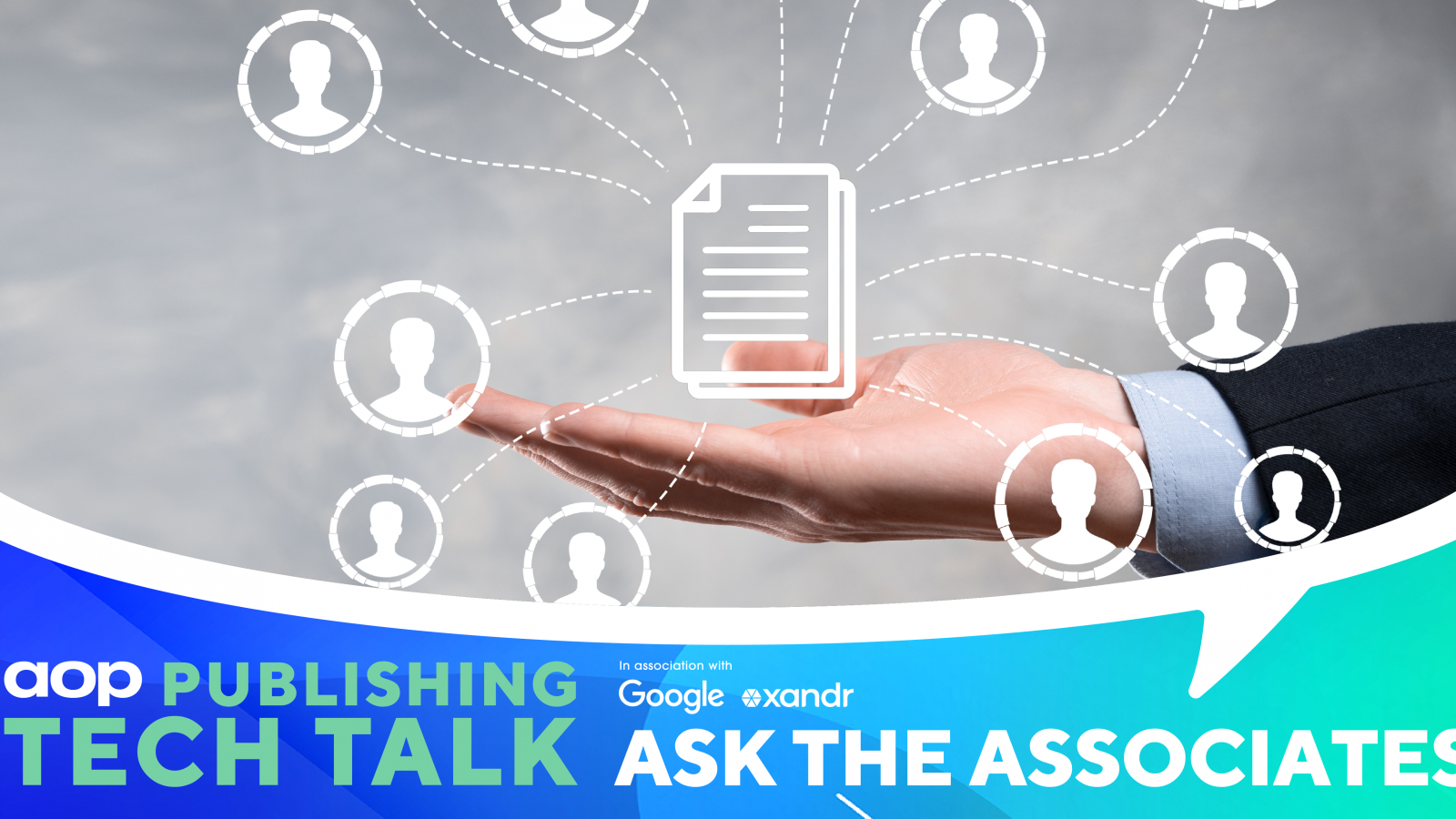
Six ideas to make your user experience the best it can be
Published: 08 Oct 2021
A poor user experience cripples your content strategy. Even if you were sharing the secret to eternal life, if you have a poor user experience, you’re going to be seriously hurting your reach and engagement. As an industry, we’ve moving beyond pop-up banners and videos that play automatically as you open a site. However, with so much competition for your audience’s attention, it’s not enough to just avoid the worst of the worst. You have to be able to create a slick, hassle-free, – and this is critical - an enjoyable user experience.
As we kick off the final day of the AOP Publishing Tech Talk, we reached out to our Associates to understand how publishers can go above and beyond to create best experience possible for your audience.
Personalisation, personalisation, personalisation.
Surfacing the right content to provide a personalised experience is critical to improving reader experience. Many publishers don’t focus enough on discoverability, or making sure each reader sees articles that are of interest.
This is an area where machine learning can be leveraged to produce the best click-through rate possible — no matter the news environment. There are all kinds of different algorithms that you can use to improve discoverability, or help people find the content they’re most likely to click on and read. We’ve found that publishers can nearly double their click-through rate by using machine learning to auto-optimise the next content recommendation shown to a particular user.
Patrick Appel, Director of Research, Piano
Make sure that the authentication process is simple, effective, and scalable.
Publishers need to continue to focus on building out user friendly, transparent, and scalable authentication strategies. A clearly communicated value exchange around free access to content in return for reader insights and data means publishers will be able to increase ad revenues and yield, whilst providing additional value to the reader. As we move towards a cookieless future, the alternative for publishers would be to increase the number of ads on a page in order to maintain revenue levels, resulting in a poor reader experience.
Ryan Afshar, Head of Publishers, UK, LiveRamp
Remove blockers to create a seamless user experience.
With the increased value of first-party data, publishers are going to need to increase their data set. Careful thought around a seamless user process should be a priority, consumers are going to tire quickly from multiple subscription and log-in requests. Removing blockers and educating the reader on the value exchange – what they will get in return for sharing their valuable information – is key.
Anne Claire Chenu, Director Tech Sales, Xandr
Educate your audience about why and how their data is being used.
It is all about transparency. Consumers need to know why publishers are collecting their data and how they can benefit from that, for example in getting more relevant article recommendations or exclusive content. Publishers collecting consumer’s data should optimise the reader’s content to create a better experience, and establish value for the use of that data.
Being open and transparent about it as well as educating the readers about why and how their data is being used is a crucial part that many have neglected for too long. There are already some good examples of how publishers are giving readers the options for how and when data is used and the experience this then creates for the reader. Choice, transparency and ownership of the data outcomes will be the buzz words of the future.
Stuart Colman, VP of Sales, InfoSum
Improving the mobile user experience will help you build engagement with your content.
Publishers should focus on building the best possible mobile ad experience. With consumers spending more time on their screens than ever before, publishers should make sure they preserve the quality of their content consumption on the platform. Offering formats that readers actually want to engage with, as in non-intrusive creative formats, that give users control of how they want to see the message, or ephemeral advertisements that are easy to expand or close. By adopting high impact formats that respect user’s navigation, publishers can grow their revenue while reducing advertising pressure.
Fabien Magalon, Chief Supply Officer, Ogury
Find the perfect balance between advertising and content.
A good balance between ads and content is the key. Less ads, bigger format and sticky position will all improve the reader experience. In addition, as video grows, publishers should make sure to use the latest video VAST format compatible with their player in order to decrease error rate and provide better UX.
Finally, publishers should start measuring KPIs in order to track the reader UX through metrics like the session duration, the loading time when a user can really start to read the article, the number of pages read, and how much each session has generated in terms of revenue
Guillaume Polaert, Co-founder, Pubstack
All this week, the AOP Publishing Tech Talk is giving publishers the information download they need to grow their businesses through the creative and effective application of tech solutions.
For the final day, we’re putting the spotlight on improving the user experience. Here’s how you can get involved…
- - It doesn’t just take great content to engage readers – it takes great user experience too. Join our premium sponsors for the day, Video Intelligence, and senior representatives from the BBC, Haymarket, and WARC as they explore how UX can keep readers on-page and increase your revenue. REGISTER TO WATCH THE LIVE WEBINAR FROM 2-3PM TODAY.
Or check out everything we’ve covered so far HERE!
Categories: Ask the Associates



